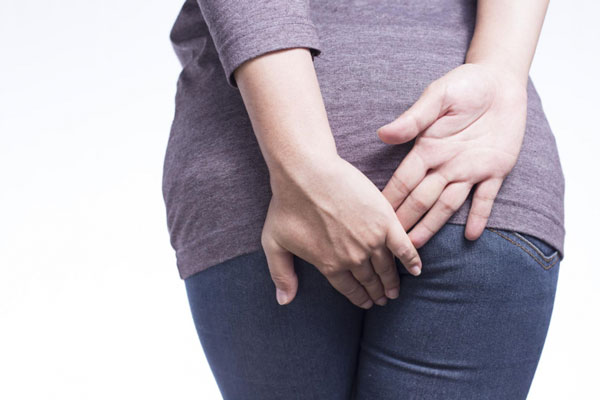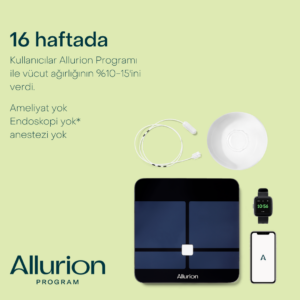 It defines a group of diseases that are common in the general population and involve the exit part of the large intestine and anal region. Diagnosis and treatment procedures are extensive and difficult as they are considered sensitive, painful, critical to quality of life and intimate.
It defines a group of diseases that are common in the general population and involve the exit part of the large intestine and anal region. Diagnosis and treatment procedures are extensive and difficult as they are considered sensitive, painful, critical to quality of life and intimate.
Haemorrhoidal Disease (Haemorrhoids)
Haemorrhoids are pads consisting of normal vascular structures near the exit of the large intestine. The enlargement and symptoms of these structures, which are present in every person, are called haemorrhoidal disease. Normally, the blood accumulated in the haemorrhoidal veins completely closes the anus (anus) and provides defecation control even if the person does not voluntarily contract the muscles that control the anus.
Why Hemorrhoidal Disease Occurs?
Constipation, straining too much, pulp-free diet, low fluid consumption, standing for a long time, lifting heavy loads, familial predisposition are predisposing factors for haemorrhoidal disease.
Classification
There are 2 types: external and internal haemorrhoids.
External haemorrhoids appear as swollen lumps of veins on the outside of the anus, often with a purplish discolouration.
While external haemorrhoids are not staged, internal haemorrhoids are examined in 4 stages.
Stage 1 is haemorrhoids that cause bleeding complaints without a prolapsing breast.
Stage 2 describes haemorrhoids that protrude during defecation and then spontaneously go inside.
Stage 3, the breast hanging out with straining can only be pushed in by the patient.
In stage 4, haemorrhoids are always outside, they do not go inside.
What are the Findings?
Bleeding is usually the first symptom. The most common complaints are palpable swelling after defecation, feeling of wetness and discharge, pain, itching.
How is it diagnosed?
Detailed patient assessment and manual examination are sufficient for diagnosis. If there are examination findings that do not coincide with the complaints, large bowel examination tests such as rectoscopy and colonoscopy should be performed in terms of possible underlying bowel diseases.
What are the Treatment Options?
In the majority of patients, treatment is possible with a combination of nutrition, adjustment of defecation habits, appropriate fibre supplementation, oral medication and local cream and wick treatments.
Non-surgical treatments are recommended in cases where treatment is inadequate and surgical treatments are recommended in patients where these methods are not suitable.
Band Ligation: It is a treatment method that aims to cut the blood flow and shrink the haemorrhoid cushion by placing a band with a special device on the internal haemorrhoids.
Hemorrhoid Artery Ligation (HAL): It is a treatment method that allows the hemorrhoid vein to be detected and ligated with a special ultrasonographic device, in addition to this, with a special suture technique, the hanging hemorrhoid cushion is hung where it should be.
Laser Applications: It is a treatment application that shrinks the haemorrhoid pads by entering into the haemorrhoid pads with a 2-3 mm thick laser tip and burning the vein.
Surgery (haemorrhoidectomy): With the classical approach, first the haemorrhoidal vein is ligated, then the haemorrhoidal cushion is removed without damaging the muscles.
 Anal Fissure (Breech crack)
Anal Fissure (Breech crack)
It is a painful tear-shaped wound at the exit of the large intestine, usually in the middle back. If the disease has been present for a long time, the appearance of an accompanying skin tag (piece of meat) occurs immediately outside the crack, causing it to be confused with haemorrhoidal disease.
Why does a breech crack occur?
Constipation, hard-thick defecation, diarrhoea attacks, excessive straining, stressful living conditions accelerate the formation of the disease. The main mechanism of the disease is involuntary, excessive contraction in the muscles surrounding the rectal area. The target of all elements in the treatment is this muscle contraction.
Classification
It is divided into acute and chronic anal fissure. Acute, i.e. newly developed anal fissure is superficial and easily treatable. However, if there is a delay in diagnosis and it becomes chronic, it can sometimes be difficult to treat.
What are the Findings?
Pain during defecation, burning and linear bleeding on toilet paper are frequently encountered. In addition, pain during defecation, which is cut with glass or razor blade, is the most common description of patients. When the diagnosis is delayed, a feeling of wetness and itching are added.
How is it diagnosed?
Detailed patient assessment and manual examination are sufficient for diagnosis. If there are examination findings that do not coincide with the complaints, large bowel examination tests such as rectoscopy and colonoscopy should be performed in terms of possible underlying bowel diseases.
What are the Treatment Options?
In most of the patients, treatment is possible with a combination of nutrition, regulation of defecation habits, appropriate fibre supplementation, hot water shower, creams effective on regional muscle contraction.
Non-surgical treatment is recommended in cases where treatment is inadequate and surgical treatment is recommended in patients where these methods are not sufficient.
Bo...ks Injection: In patients who cannot recover with vital regulation and medical treatment, botulinum toxin is injected into the muscle and muscle paralysis is provided reversibly for 4-6 months; during this period, it is aimed to heal the crack.
Surgery (Sphincterotomy): It is an operation that takes about 10 minutes under regional anaesthesia. A part of the muscle that is the cause of the disease is cut and the breech crack is allowed to heal. In the meantime, the meat piece formed at the exit of the anus can also be removed.
Perianal Abscess
It is an infectious event caused by obstruction in the glands that lubricate the inside of the anus around the anus.
Why Perianal Abscess Occurs?
The disease can occur at almost any age and in both sexes. It is caused by obstruction in the lubricating glands, accumulation of the fluid secreted by the gland and infection of the area. However, in case of young age and frequent recurrence, underlying bowel diseases and immunosuppression should be investigated.
Classification
There are a number of potential gaps in the normal anatomical structure around the large intestine. It is named according to the location according to the expansion of the abscess starting from around the anus towards these areas.
What are the Findings?
Severe pain, swelling and fever around the anus are the most common complaints. There may also be discharge with the opening of the abscess to the skin. If there is a delay in the application to the doctor, inadequate diagnosis and treatment, it can turn into a very serious condition known as Fournier Gangrene, which is life-threatening.
How is it diagnosed?
Generally, anamnesis and anal examination are sufficient for diagnosis. However, if the abscess is deeply located or there is clinical suspicion, ultrasound or computed tomography of the anus should be performed.
What are the Treatment Options?
Perianal apsenin tedavisi, acil cerrahi drenajdır. Bölgesel anestezi ile kısa süren bir cerrahi müdahaledir. İltihabın tamamen boşaltılmasını ve ilgili alanların tamamen temzilenmesini içerir. işlem sonrası yara yeri açık bırakılır; apse alanı çok geniş ise boşaltıcı dren denilen cerrahi materyaller kullanılabilir. Apsenin iğne ile boşaltılması, sadece antibiyotik tedavisi ile odağın kontrol edilmeye çalışılması tedavide yetersiz kalmaktadır. Yeterli ve uygun tedavi sonrası dahi hastaların %40 ında perianal fistül gelişmektedir.
Perianal Fistula
It can be defined as a continuous discharge from a duct with one end in the anus and the other end in the skin. It is often caused by a previous perianal abscess.
Why Perianal Fistula Occurs?
It is frequently caused by previous perianal abscess. Sometimes there may be underlying intestinal and extraintestinal causes. Previous haemorrhoids, fissure surgery, inflammatory bowel diseases, regional injuries, immunosuppressive diseases, drugs may be the cause of the disease.
Classification
Fistulas can be divided into simple and complicated fistulas according to their contact with the muscles around the anus.
What are the Findings?
Discharge around the anus is the most common finding. History of the patient should be analysed for previous abscess.
How is it diagnosed?
If suspicion is aroused by taking patient history and observation of the external mouth on physical examination, the inside of the fistula should be evaluated with an anoscope. Before treatment, the fistula should be mapped and MRI should be performed to determine its connection with the muscles.
What are the Treatment Options?
Treatment options vary according to the map of the fistula. In all treatments, there is a possibility of recurrence at varying rates and especially in complicated fistulas, gas and bladder retention defects that affect daily life more or less due to possible muscle damage may be encountered.
Fistulotomy
In simple fistulas, it is sufficient to cut the skin covering the canal and clean the inside of the wound left open, while multi-stage surgical methods are recommended in complicated fistulas.
Seton
It is one of the staged surgical methods in complicated fistulas. After the anatomy of the fistula is revealed, a loose thread of rubber, silicone, etc. material is tied loosely to the fistula with the help of a guide wire passed through it and infection control is provided in the first stage and abscess formation is prevented. After this stage, the treatment scheme is shaped.
Laser (FiLac)
The use of laser, one of today's modern applications, in perianal fistula is one of the most preferred methods due to the fact that it can be reapplied in case of possible recurrence and the possibility of muscle damage is close to zero. It is a method that can be applied in a very short time with regional anaesthesia and the patient can continue his/her daily life after the procedure. Especially in patients with complex anatomy and high frequency of infection, it is an appropriate approach to tie a seton beforehand.



Comment: